Images of Over and Over Again
Without a doubt, rhythm in art can be considered one of the fundamental principles of art and its production. Interested in exploring more and understanding in depth yet another of its elements, the repetition in art is quite possibly one of the most interesting methods that the artists implement to create a certain movement, stillness, design, confusion, to rebel against the notion of tradition, re-define the idea of the original and the copies, or to cast true focus on one part of the artwork that either makes the work more visible or purposely invisible. Seen as one of the most important techniques for reduction, repetition is used in an equal amount both in music and visual arts[1] and is seen as both aesthetic and poetic device [2].
Why repeat? Do repetition artists use the same motifs over and over again to achieve perfection or is there something more to repetition art? This and much more we have researched for you, so please read on.
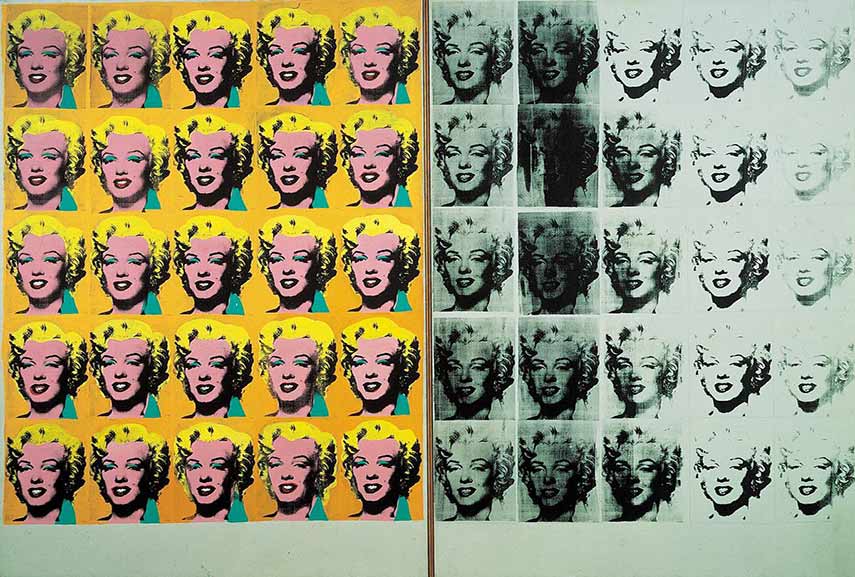
Definition of Repetition in Art
Before we return to some of the most memorable pieces of repetition in art and turn our focus on its history, we need to take a step back to mention the definition of repetition in the visual production. Seen as one of the fundamentals of creativity, repetition, in a similar manner to the rhythm, helps to create a sense of movement within an artwork. In visual production, it is a recurrence of a particular line, pattern, shape, or other visual elements in a single or part of the series[3]. The production of something which is repetitive yet at the same time exciting is a challenge, as many consider the recurrence as boring and still. The element of repetition in art many authors used on purpose to comment on the state of the world around us and to challenge the public to slow down the race for the achievement of consumerism gods and idols. Sometimes the repetition is used to build a sense of tension if no variations are implemented and it is often in the subtle detail that the key to the understanding of such pieces lies[4].
There is a variety of ways in which the repetition in art can occur. It can be even or uneven, regular or irregular, it can form radiation, occurring when the repeat of elements is spread out from the central point, or a form of graduation, where the parts slowly become smaller or larger[5]. Working with repeated patterns, and this was highly regarded during the Art Nouveau period and its pattern-making production, the surface of the work is enhanced, therefore made more interesting to the public, and at the same time, a sense of order is added to the composition. As a tool, repetition in art helps to build not only the visual part of the work but it often provides a deeper meaning to the artwork, hiding a more philosophical and conceptual identity.
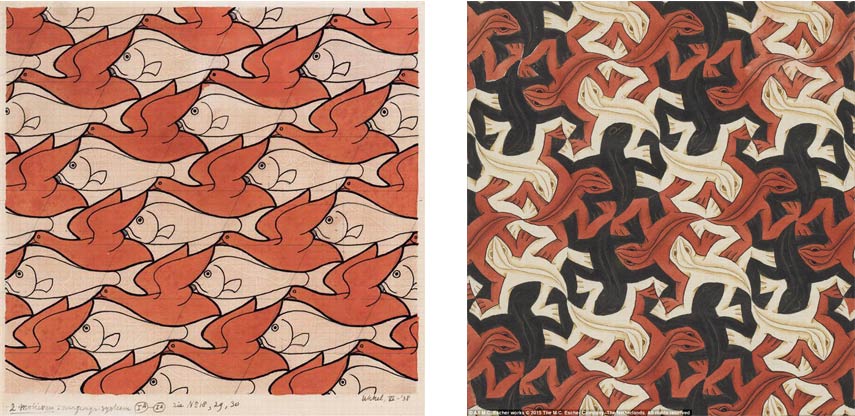
History of Repetition Art
If we turn away from the definition of repetition in art and avoid to comment on every repeated line, surface, color, pattern, and image in visual creativity, today aided by the computer-based images, our attention is undoubtedly turned towards the concept and the inner workings of the artist or the particular period of production and the decision as to why they used repetition. We enter a world that speaks about the repetition in the choice of the subject matter, evident in the production of Claude Monet, Wassily Kandinsky, Kazimir Malevich, that formed some of the most influential avant-garde movements, or a world that uses repetition in art as a commentary tool of consumerism and mass production, decorating the creativity of Andy Warhol or various Minimalism artists.
See more works by Andy Warhol on our marketplace!
The definition of repetition in art changed throughout the years. Few of the major concerns that arise when one speaks about repetition are for sure issues of originality, authenticity, and appropriation. This is a major concern for the Postmodernism philosophy and the Dada readymades are marked as important images that ridiculed the need of tradition to provide special meaning to the production and the choice of materials. Pop artists, minimalists, performance, and conceptual authors, adopted the concept of undermining the authenticity and value. Appropriation in art, based on the re-use and on the repeat of existing images, raises concerns of copyrights since many contemporary artists use accessible imagery with little or no alteration to the original. Such subtle changes raise questions of identity, and if the new pieces trivialize the original[5].
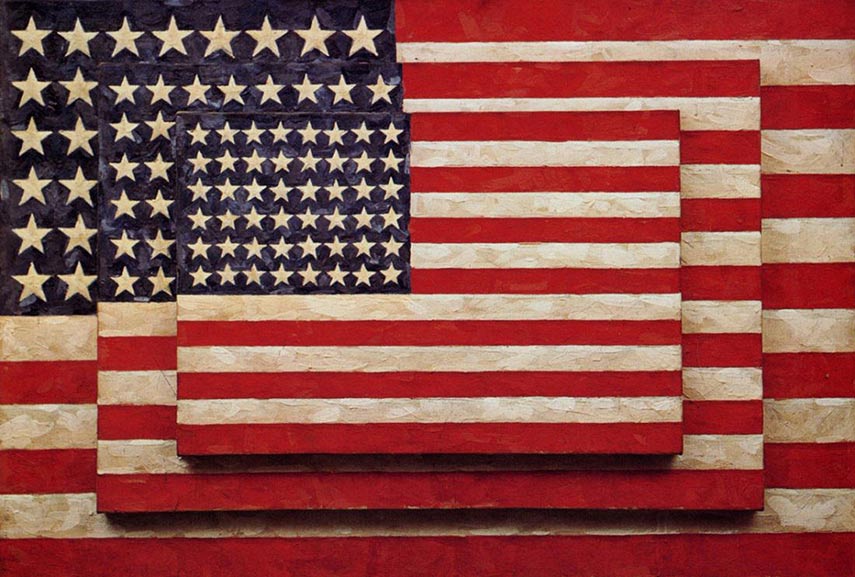
Famous Repetition Artists
Over the last two millenniums, many artists of both the past and the present have focused on constant depictions of the same subjects and motifs in their work as this repetition is encoded in the very DNA of art creating - practice makes perfect. As ancient painters and sculptors created the same pieces over and over again until they've mastered their skill, this practice was carried over to the times of Renaissance and Baroque. However, early avant-garde artists were the first ones that started repeating exactly the same motifs without emphasizing the goal of getting more proficient at painting, but instead striving for other intentions. Since then, repetition started to be a concept through which getting better was not the result an artist was going for. This radical conceptual change proved to be an excellent fit with the anti-traditional art forms of the 20th century, with many individuals relying on constant presentations of the same subjects and motifs to reach the desired goal. We will now present you with a list of the most interesting artists that worked or still work within the conceptual borders of repetition in art practice, all of them striving for different results with such creative strategies.
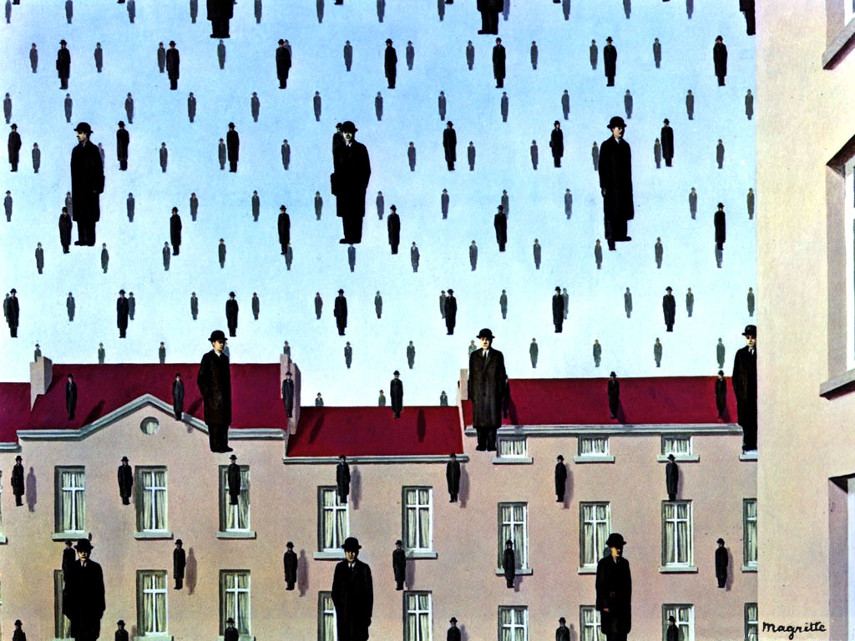
Claude Monet
Who better to top this list than the very man who established the modern concept of repetition without intentions of simply becoming more skilled? Claude Monet was a legendary French painter who was a leading figure in the time of Impressionism, arguably the first avant-garde movement, although this claim has been often disputed. However, the way impressionists approached their visuals was so radically different from classic art that the entire movement, including Monet, can safely be placed in the avant-garde category without much trouble. Claude aspired to paint the same sight over and over again in order to capture the view's different state depending on the time of the day in which Monet would paint them. Through this repetition, he would make series of such paintings out of which the most acclaimed are depictions of water lilies, train stations, grain stacks and cathedrals. Focusing on natural light, Monet did not change the perspectives or equipment, only the time in which he would paint. These pieces are not only important for the Impressionism phenomenon but are also iconic for their evidential role in presenting an avant-garde mindset of an artist that desired to break the bonds with traditional forms.
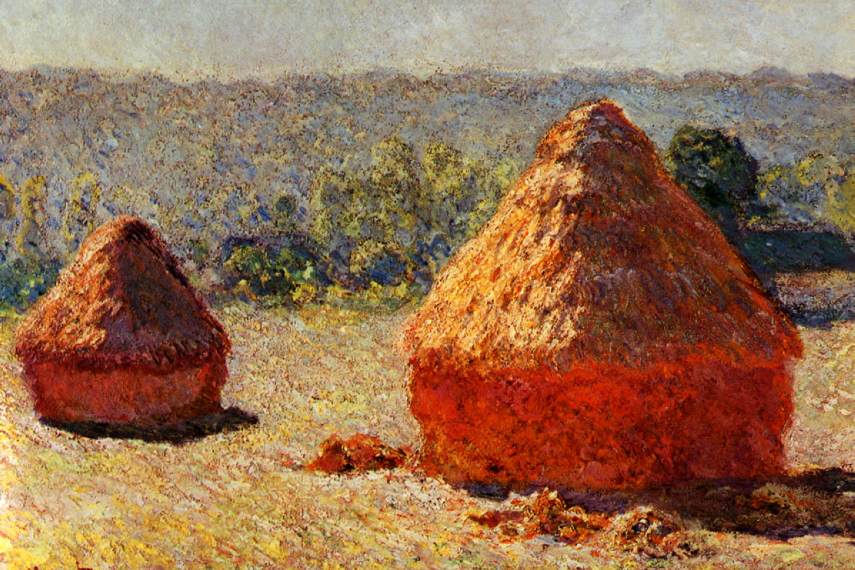
Piet Mondrian
Another avant-garde artist on our list, Piet Mondrian was a painter, theorist and writer who believed that art should reflect the underlying spirituality of nature surrounding us. In order to somehow make his aesthetics reflect such an opinion, he simplified the subjects of his paintings down to the most basic elements, revealing the essence of the mystical energy in the balance of forces that govern nature and the universe. Through such strategies, Mondrian eventually established a strict visual vocabulary of squares and lines, presenting subjects in a basic vertical and horizontal fashion. This methodical progression of his artistic style from traditional representation to complete abstraction did not come overnight, but once established, Piet's entire output was consisting of repetitive depictions of squares with different colors, separated by strict bold lines. Mondrian's discipline in presenting squares is one of the most famous repetitive concepts in art and the Neoplasticism theory behind them was a key moment of abstraction in painting.
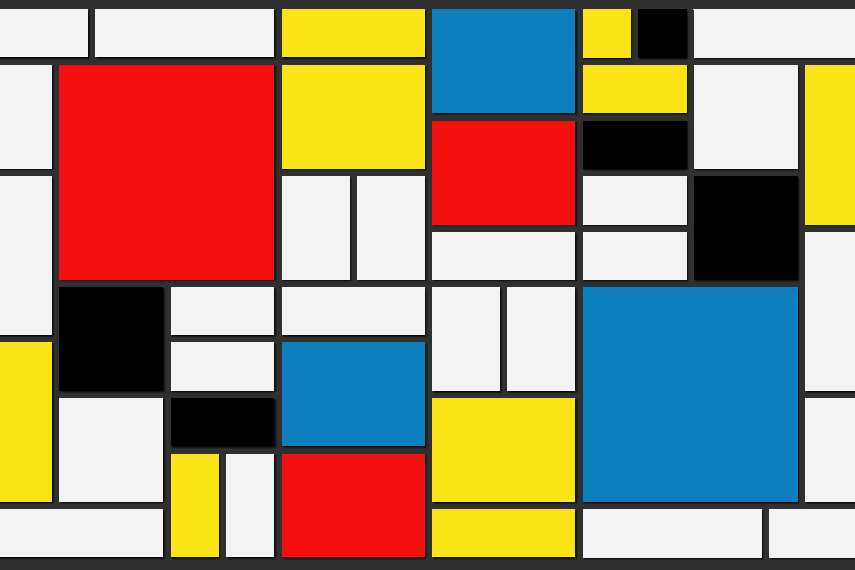
Andy Warhol
The unofficial king of repetition art, Andy Warhol is the legend of the Pop art phenomenon and one of the most commercialized names of the 20th century. Inspired by the imagery of popular culture, Warhol simultaneously celebrated and criticized consumption choices and mass (re)production, effectively turning his work into a repetitive whirlwind and establishing the grounds for the most successful Post–World War II art movement. Working in a wide range of media including printmaking, painting, hand drawing, silk screening, sculpture, photography, music and film, Warhol became famous and influential for his repetitive images of soup cans, soda bottles, dollar bills and iconic portraits of celebrities like Marilyn Monroe, Mick Jagger, Elvis Presley, Jimmy Carter, Prince and Elizabeth Taylor. Andy would often insert identical pictures into one piece, assembling them with discipline and differencing them only with color. These illustrations, prints, and posters of the same subjects repeated in regular rows are some of the most iconic images of the 20th century, credited with re-defining many concepts and setting new standards in contemporary art.
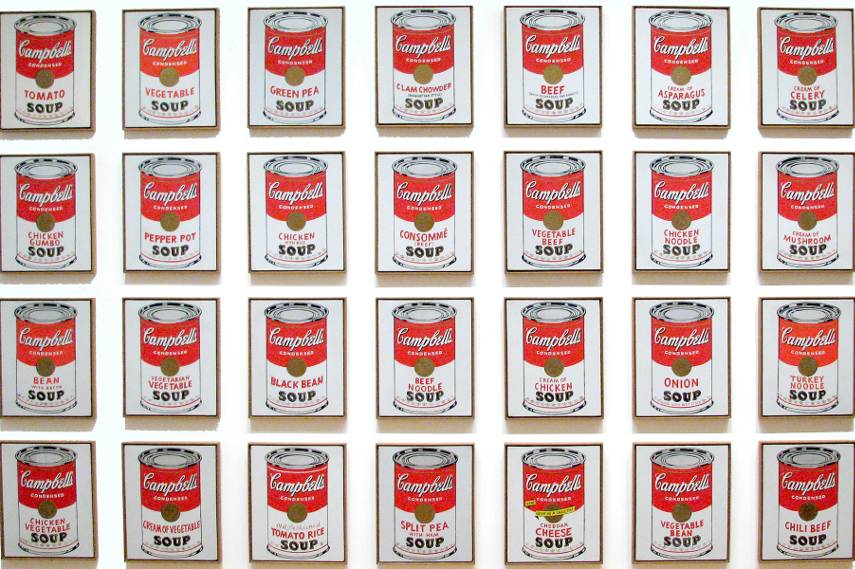
Yayoi Kusama
Although the Japanese artist Yayoi Kusama creates in a diverse field that consists of everything from painting to sculpture, every single piece she ever produced has one same motif all over it - endless dots. These seemingly endless repetitive motifs are the trademark of Yayoi Kusama's art and eventually became an instant give-away that you are observing one of her pieces. Through her art of spots, Kusama proved one can work within mixed concepts of feminism, minimalism, surrealism, Art Brut, pop art and abstract expressionism without endangering any one style. Furthermore, the level of repetition of psychedelic colors became the most consistent one in the history of modern Asian art as Yayoi has been active for over sixty years. Due to her unique artistic vocabulary, this provocative avant-garde artist from Japan became one of the most prominent figures in her country's contemporary culture and an excellent display of consistency in modern art.

Yue Minjun
Yue Minjun can safely be defined as one of the most humoristic artists on this list. This Beijing-based painter and sculptor uses the same motif in every single piece he creates – his own face, usually frozen in a state of hysterical laughter. Regardless of what medium Minjun is working in, his self-illustrations are arranged in various settings, some ironically usual and some far from ordinary, all of them relying on Yue's face to be the focal point. With unique compositions such as a scene placed amidst a Jurassic period with two Juis laughing beside a BMW or a bunch of giggling Minjuns shooting another bunch of Minjuns who also have wide smiles on their faces, it is easy to figure out why this Chinese artist is held in such a high regard and has a wide fanbase. Minjun's unrivaled sense of humor is truly the strongest aspect of his work, but the fact he places the same motif on every single painting and sculpture he authored is what secured his place on this list.
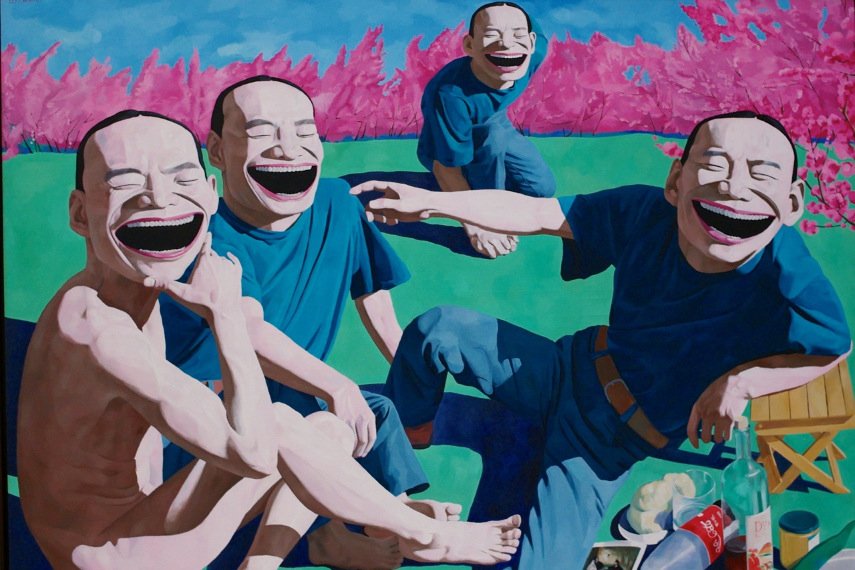
Riusuke Fukahori
Combining the fields of art and magic with his work, Riusuke Fukahori is a Japanese artist best known for his three-dimensional goldfish paintings created by pouring resin. Fukahori brings these adorable creatures to life by portraying them to a degree it is literally impossible to figure out if you are looking at a photograph or a real animal, let alone a painting of a goldfish. These incredible examples are a result of a career-long dedicated and consistent depicting of these animals - all Fukahori does is paint goldfishes and that is the be-all and end-all of his work. The key aspect of his uniform work is the fact Riusuke bases his art around a repetition of liquid resin pouring and acrylic painting that give the desirable three-dimensional effect. To say these fishes are realistically depicted would be an understatement as the subjects of Fukahori's work have reached an impressive level much better described as an optical illusion. Furthermore, Riusuke claims he never uses photographs of models for his work, claiming that everything he paints comes directly from his memory and imagination.
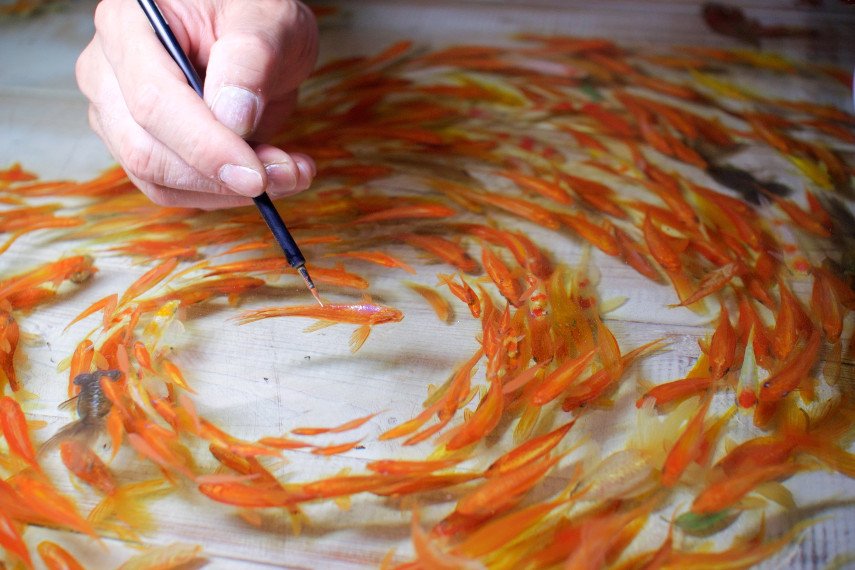
David Begbie
One of the most unusual artists on our list whose style is completely unique and unrivaled, David Begbie is a Scottish sculptor that relies on metal mesh wires in order to depict human figures and facial expressions. Such a technique resulted in numerous similar pieces, most of them presenting us with human torsos which can safely be described as products of fine sculpting. These powerful, erotic, tactile and intimate pieces are one of a kind and they are only as astonishing as they are because Begbie was dedicated enough to devote his entire career to creating the same subjects through the same method. This is even more impressive when you realize just how hard working with wire mesh can be, especially when you devote so much attention to details as David does. In other words, David achieved what very few artists before him managed to do – reach the sculpted perfection of form. And when put together, his images are clearly a consistent output that is unlike anything you've ever seen.
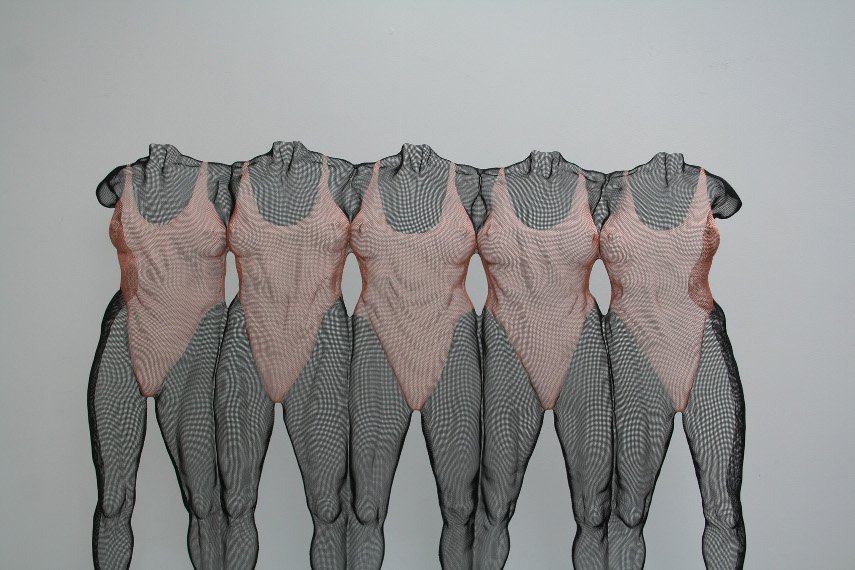
Pattern and Repetition in Photography
Because patterns and repetition can be found everywhere around us, photography has a fairly easy job to capture it. "Fairly," because even though a photographer does not need to invent one from scratch, like painters need to, they should still have an eye for detail and the ability to integrate it in their composition the right way. The soothing feeling of routine that repetition provides for any kind of artwork is best expressed through contrasts, colors and structure in photographs, allowing the image to evoke a sense of unity, coherence and continuity, rhythm, harmony, vividness and overall organization [7]. There aren't many photographers who go and intentionally chase patterns and repetitions found in their immediate surroundings; rather, it is often a chance encounter with natural or architectural elements that end up in their frame, sometimes even involuntary. Here, we're talking about artists working with nature and abstract image-making, although still life and aerial photographers are also known for delivering some stunning imagery of repetition in art.
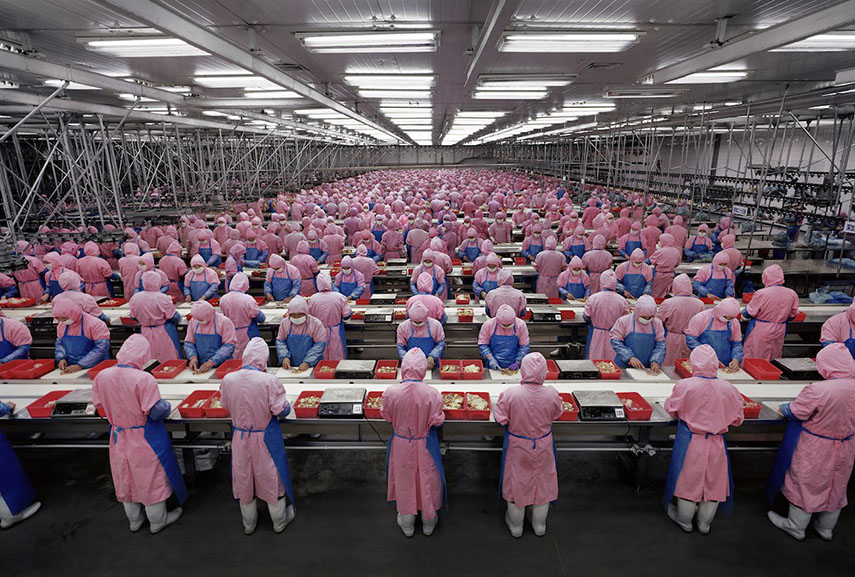
Photographing the Repetitive
Going way back in the history of photography, there are the pioneering images of Eadweard Muybridge, who was the very first to create a study of movement. In 1878, he was hired by a racehorse owner to give answer to the debate on whether all four feet of a horse were off the ground at the same time while trotting. His series of images show the same moving figure over and over again and although it wasn't exactly a repetition, it was probably the first presentation of such pictures since the camera was invented, and Muybridge did photograph the same items repeatedly. Correspondingly, Bernd and Hilla Becher documented the rural landscape of Germany throughout the 20th century; their photos of gas tanks and winding towers either show the same structure shot from different angles or group similarly-looking ones together[8].
Occasional repetitive elements can also be found in the production of Gordon Parks, André Kertész and László Moholy-Nagy. While Parks did portraiture and used patterns in group pictures, such as the 1963 Ethel Shariff in Chicago, Kertész and Moholy-Nagy were also street photographers who often took photos of lines, contrasts and geometric patterns in the urban environment. In the 1930s, Margaret Bourke-White also donned several shots of workers and radio transmitters, which introduce broken repetition as another form of creativity which interrupts the continuity of elements and makes the image even more dynamic. More images of repetition photography can be found among the images by Harry Callahan, Bruce Davidson, Ed Ruscha and Ansel Adams, who came across many patterns in nature during his journeys. More recently, we can talk about the creativity of Edward Burtynsky and, at times, Andreas Gursky, who emphasize the notion of massive repetitions.
Tips - How To Create Interesting Patterns and Repetition in Photography
To Infinity and Beyond - Where is Repetition in Art Today?
Is repetition in art a thing of the past? It is highly unlikely that it will ever be. It is rather simple: its ability to express endless, flawless, captivating imagery is something that will never go out of fashion. Apart from the extensive legacy left by modern and early contemporary artists mentioned above, many of the creatives working today are interested in achieving perfect, succinct images using repetition, which is why we still see such a rich number of such images across a variety of media, genres and styles[9]. Think of the complex paintings by Chuck Close, who literally creates a bigger picture using smaller, repetitive elements, or Olafur Eliasson's numerous light installations, come to mind as well. Inspired by Escher's tessellations, artist Ben Parker uses paper to create mesmerizing artwork, and environmentalist Andy Goldsworthy teams up with nature to form radial sculptures and installations. Repetition was also embraced by the street art movement, in particular with those working with paste-ups and posters, like Shepard Fairey. Since the advent of computers and the birth of Digital art, many software have been used to create patterns, although perhaps the best display of repetition in this field is the invention of .gifs. In conclusion, repetition art offers a certain kind of ever-lasting inspiration that appeals to both artists and the audience, and this very fact makes us believe that the concept of reproduction is bound to repeat itself in the future as well.
Written by Silka P, Andrey V. and Angie Kordic.

Editors' Tip: On Repetition: Writing, Performance and Art
Exploring the atmosphere of our present, where the repetition is seen as a sign of boredom and alienation labor, the author of the book adds a twist and suggest the idea that repetition is a moment of bliss and rest. Examining the repeat across different disciplines, such as contemporary performance, dance practices, craft, and writing, the On Repetition: Writing, Performance and Art book offers a new face and originality to the interdisciplinary exploration of repetition within the contemporary culture - at the same time drawing on psychoanalysis, philosophy, linguistics, sociology, and performance studies.
Sources:
- Anonymous, Repetition, Nook [August 22, 2016]
- Konova, J., Repetition, The Chicago School of Media Theory [August 22, 2016]
- Anonymous, What is repetition in art?, Reference [August 22, 2016]
- Cooke, A. (2005), Repetition, Robert Henke [August 22, 2016]
- Anonymous (2013), Principle of Repetition, Visual Communication Design [August 22, 2016]
- Soriano, J.G., López Albert, C. (2014), Building Repetition Through History - Motivations And Implications, Mas Context [August 22, 2016]
- Anonymous (2011), Repetition in photography, tattahaara [August 23, 2016]
- Horn, C., Introduction to Photography 4: Repetition, Academia [August 23, 2016]
- Anonymous, Repetition, Rhythm and Pattern, flyeschool [August 23, 2016]
Featured image in slider: Damien Hirst – Spot Painting. Image via whatartdoes.wordpress.com; Andre-Kertesz - Photography; Gordon Parks - Ethel Shariff in Chicago, 1963. Image via the-vu.com; Margaret Bourke-White - WOR radio transmitting tower, 1935; Andy Warhol - Dollar Sign; Yayoi Kusama - Kusama with Pumpkin. Image via anothermag.com;
pasleymonexte1974.blogspot.com
Source: https://www.widewalls.ch/magazine/repetition-in-art-artists-photography